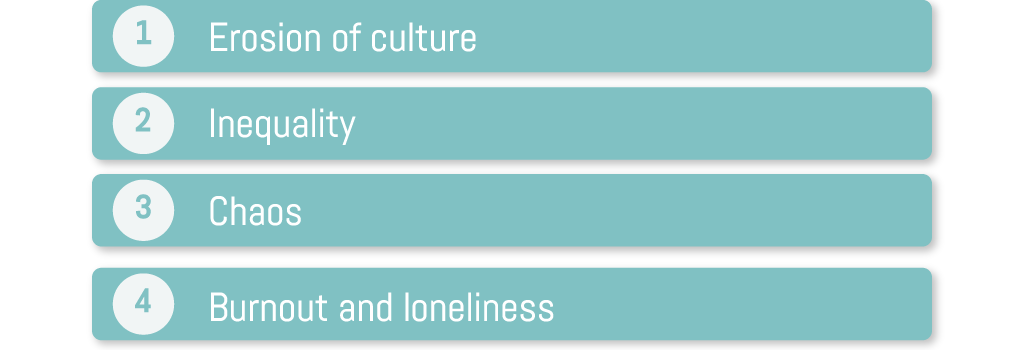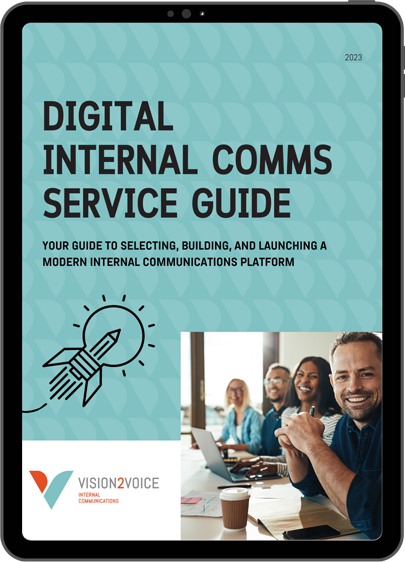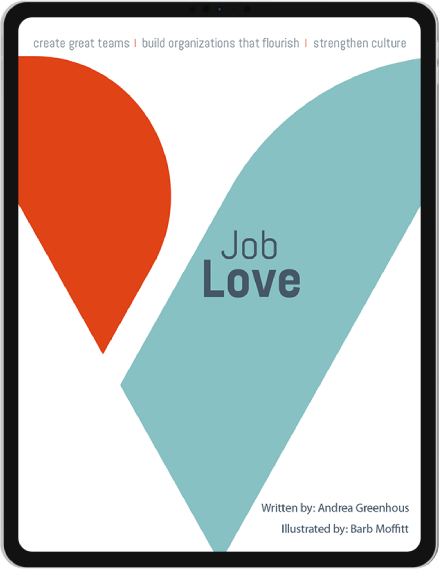Work is Not a Place – A Fresh Look at the Challenge of the Hybrid Workplace

It seems like there are hundreds of studies out there about a return to the office and they all say the same thing – most employees want choice and flexibility when it comes to where and when they work. What these studies are really telling us is that employees want to be empowered, feel trusted, and be respected enough that they can determine what they need to do their very best work.
In our work and in our research, the same themes come up again and again. When people feel empowered, trusted, respected, and have agency over their work, they thrive. They are also happier and their well-being increases.
In our view, a more flexible work environment is long overdue.
The challenge ahead
The shift to a more dynamic way of working where people have more choice is a CHANGE. This means leaders and internal communications professionals need to focus on the mindsets and behaviours employees need to adapt to be successful.
Layered into the change is the fact that moving to a more flexible work environment has many risks and pitfalls that must be avoided. These include:

The magic of strategic internal communication is that it can support change and help organizations avoid the pitfalls and risks of increased choice and flexibility.
Let’s see how that’s possible!
Keep your culture strong
Your workplace culture is not the place where the work happens, but it lives and breathes in the people that do the work. It’s about norms, values, and behaviours. I may be slightly biased, but I believe communication can, and should, be a significant driver of culture. Being strategic about communication and making sure every precious word, image, and message reinforces the culture you want to build is more critical than ever.
And remember, flexible work is not just about choice. It’s about trust, respect, and empowerment. These themes should also be emphasized in your communication to reinforce just how import it is for employees at all levels to think, feel and act in a way that reinforces these values.
Address inequality before it even starts
One of the greatest risks of a hybrid model is that it could introduce new inequities in the workplace. For example, if the boss is in the office every day, it becomes easier to revert to managing through presence – in other words, those who are around get the most recognition. This has the potential to hurt women who may choose to work at home more often because of child or elder care responsibilities.
Communication should emphasize results, priorities, and purpose (not necessarily in that order) to help change people’s mindsets about what is expected of them at work. If leaders and internal communications professionals make it clear that presence at the office doesn’t provide an advantage to anyone, being the one at the office every day until eight will no longer be rewarded or a badge of honour.
I can think of a handful of other ways that a more flexible model can be perceived as unfair to one group or individual. Be on the lookout — listening and learning — for any policy, process, or work habit that ends up making people feel like they are being treated unfairly.
Prevent chaos
Sometimes it is hard to wrap your head around how a 4000-employee company could give every person the choice of where and when they work. Yet for the last 50 years, knowledge workers in particular have had more and more control over how they work. The last vestiges of companies with a strict hierarchy, and command and control management systems are finally slipping away.
By reframing work as an ecosystem, it is possible to understand how a complex network of interconnected systems that includes people, and their physical environment can work in harmony. In particular, leaders and internal communications professionals must think about how they can support their teams to work together towards a common purpose.
In a hybrid ecosystem, where each member depends on others establishing a balance between individual needs, team needs and customer or organizational needs, is critical to success. fostering harmony starts with establishing norms. In Tsedal Neeley’s book, The Remote Work Revolution (https://www.tsedal.com/book/remote-work-revolution/), she suggests having a launch event where teams work together to establish trust, communication norms and to set expectations, boundaries, etc. Providing tools and resources (hint, buy Professor Neeley’s book for everyone) can be a great way of reducing the chaos and supporting people through this important change.
Create belonging and build community
Building community is key for employees to having a sense of belonging. One of the things we’ve all missed is the power of human connection and the casual encounters between meetings, in the lunchroom, or elevator. It’s essential to be deliberate about giving teams ideas, space and time to have informal get-togethers. Find out what rituals your employees want, you might be surprised that it is not what you expected.
Belonging is also created through stories. Stories are powerful ways of building a shared sense of meaning that bring people together. Start by sharing pandemic related stories as Elizabeth Williams suggests in her fantastic article. These build a shared sense of meaning and bonds that bring people together.
Get to a better place
As we begin to reimagine our workplaces after COVID-19, it is critical to acknowledge and find solutions for the challenges that come with this shift. Getting to a better place will take patience, understanding, constant communication, and listening to nurture the sensitive ecosystem that is created to get the work done and help people thrive.
Vision2Voice can help your organization navigate through the transition to a hybrid workplace. Reach out today to find out how we can help.





